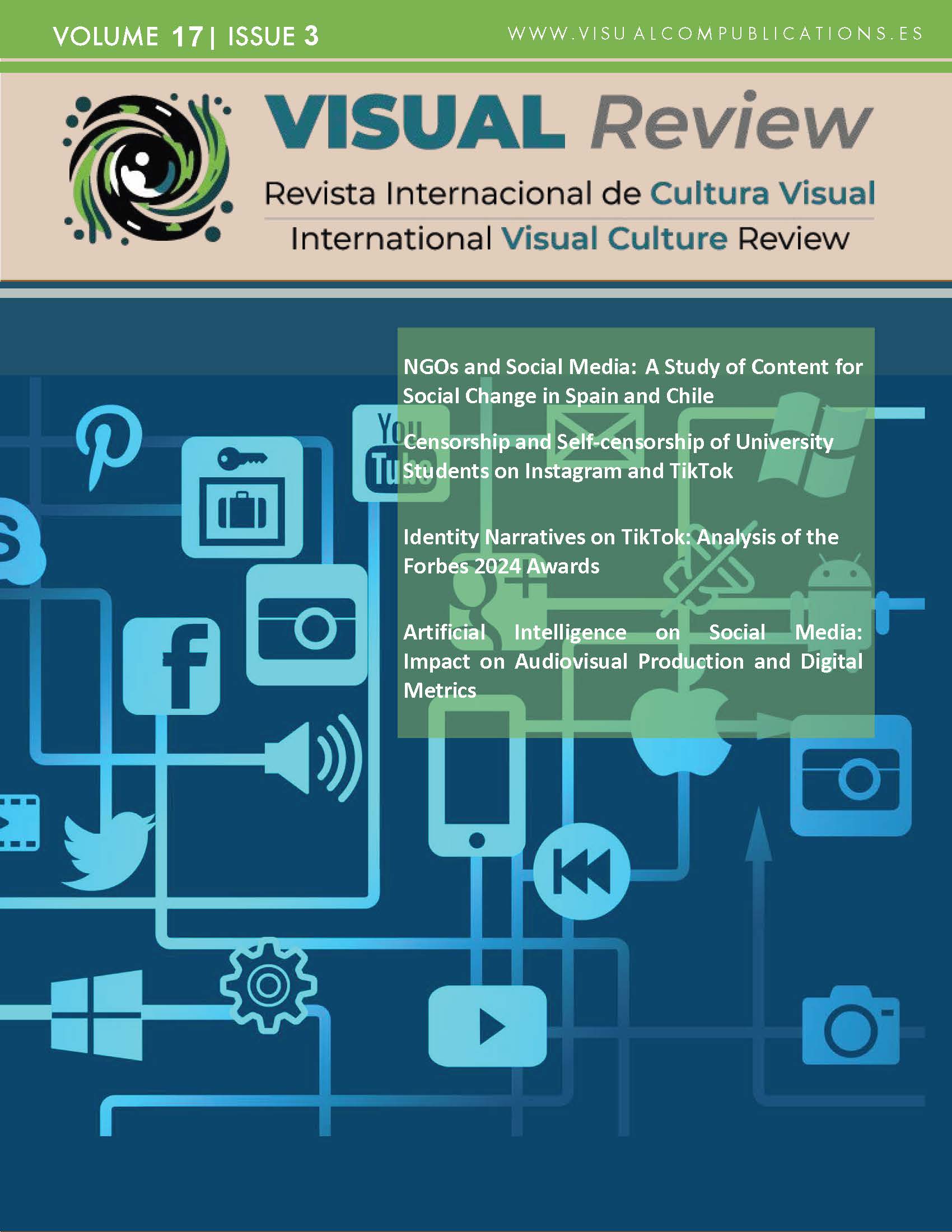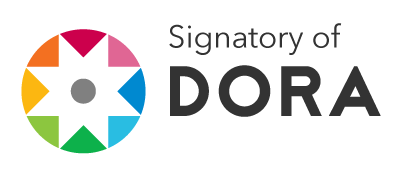Influencer-Activistas 'Eco', Percepciones y Sentimientos
Un Análisis desde el Neuromarketing
DOI:
https://doi.org/10.62161/revvisual.v17.5787Palabras clave:
Influencers, Activistas, Compromiso, Neuromarketing, Eye Tracking, Redes Sociales, InstagramResumen
En el ámbito de las redes sociales, las personas comprometidas públicamente con causas sociales, medioambientales o políticas son consideradas “influencers activistas”. Este artículo toma como referencia esta figura emergente con el objetivo de analizar sus mensajes en Instagram y el impacto generado por estos en la audiencia. A través de un cuestionario y técnicas de neuromarketing (Eye Tracking), se ha conseguido: 1) extraer resultados sobre las respuestas implícitas (atención, rutas visuales y emoción) que producen los mensajes de los “influencers activistas” en el ámbito medioambiental y; 2) identificar las respuestas explícitas (asociación, coherencia y credibilidad) de las causas defendidas.
Descargas
Estadísticas globales ℹ️
|
408
Visualizaciones
|
234
Descargas
|
|
642
Total
|
|
Citas
Adler, R. P., & Goggin, J. (2005). What do we mean by “civic engagement”? Journal of Transformative Education, 3(3), 236-253.
BayWa r.e. (2023). Nuevo estudio de Brandwatch encargado por BayWa r.e. https://www.baywa-re.mx/es/compania/noticias/details/la-temperatura-global-aumenta-pero-la-conversacion-sobre-el-clima-disminuye
Berger, B. (2009). Political Theory, Political Science, and the End of Civic Engagement. Perspectives on Politics, 7(2), 335-350.
Brady, H. (1999). Political Participation. In J. P. Robinson, P.R. Shaver, L. S. Wrightsman (Eds.). Measures of Political Attitudes (pp. 737-801). Academic Press.
Carpini, M. X. D. (2004). Mediating Democratic Engagement: The Impact of Communications on Citizens’ Involvement in Political and Civic Life. In Handbook of political communication research (pp. 413-452). Routledge.
Carpini, M. X. D (2009). The Inherent Arbitrariness of the “News” versus “Entertainment” Distinction. "Keywords: The Public Sphere, Public Culture and Reasoned Public Choice" of the 59th Annual ICA Conference in Chicago, May 22, 2009.
Carpini, M. X. D., Cook, F. L., & Jacobs, L. R. (2004). Public deliberation, discursive participation, and Citizen Engagement: A review of the empirical literature. Annual Review of Political Science, 7, 315-344.
Cooper, T. L. (2005). Civic engagement in the Twenty‐First Century: Toward a Scholarly and Practical Agenda. Public Administration Review, 65(5), 534-535.
Della Porta, M.D. (2016). The Oxford Handbook of Social Movements (1st ed.). Oxford University Press.
Dunne, T. (2008). Good Citizen Europe. International affairs, 84(1), 13-28.
Ekman, J., & Amnå, E. (2012). Political participation and civic engagement: Towards a new typology. Human affairs, 22(3), 283-300.
Etzioni, A. (1996). A moderate communitarian proposal. Political Theory, 24(2), 155-171.
Galston, W. A. (2001). Political Knowledge, Political Engagement, and Civic Education. Annual Review of Political Science, 4, 217-234.
García Fortuny, H. (2018). ¿Están los influencers perdiendo su credibilidad?: Estudio
sobre la credibilidad que el consumidor otorga al mensaje emitido por el influencer en
la plataforma Instagram dentro del sector cosmético. Recuperado de
https://ddd.uab.cat/record/200615
Lin, H. C., Bruning, P. F., & Swarna, H. (2018). Using online opinion leaders to promote the hedonic and utilitarian value of products and services. Business horizons, 61(3), 431-442.
Jung, N., Kim, Y., & de Zúñiga, H. G. (2011). The Mediating Role of Knowledge and Efficacy in the Effects of Communication on Political Participation. Mass Communication and Society, 14(4), 407–430. https://doi.org/10.1080/15205436.2010.496135
Knoll, J., Matthes, J., & Heiss, R. (2020). The social media political participation model: A goal systems theory perspective. Convergence, 26(1), 135-156. https://doi.org/10.1177/1354856517750366
Marlowe Jr, H. A., & Arrington-Marlowe, L. L. C. (2005). Public engagement: Theory and practice. Unpublished manuscript, https://bit.ly/4jM9wEa
Martinez, L. (2021). Casos exploratorios aplicados a partir de distintos diseños metodológicos: eye-tracking fijo y online. Communication & Methods, 3(2) 125-141. https://doi.org/10.35951/v3i2.136
Martínez, L. M., & Piqueiras, P. (2024). Estrategias de comunicación pública sobre prevención y cannabis: Eye tracking y facial expression. VISUAL REVIEW. International Visual Culture Review/Revista Internacional de Cultura Visual, 16(2), 193-204. https://doi.org/10.62161/revvisual.v16.5225
Muñoz, P. (2021, October 13). The birth of the influencer-activist, a case study from Spain. https://doi.org/10.31235/osf.io/fcq5z
Norris, P. (2002). Democratic Phoenix: Reinventing Political Activism. Cambridge University Press.
Norris, P. (2003, November). Young people and political activism: From the politics of loyalties to the politics of choice. In Report for the Council of Europe Symposium: “Young people and democratic institutions: from disillusionment to participation” (pp. 1-32), Strasbourg.
Park, C. (2013). Does Twitter motivate involvement in politics? Tweeting, opinion leadership, and political engagement, Computers in Human Behavior, 29(4), 1641-1648. https://doi.org/10.1016/j.chb.2013.01.044
Pickard, G.Y. (2017). Media Activism in the Digital Age (1st ed.). Routledge.
Putnam, R. D. (1993). The prosperous community. The American prospect, 4(13), 35-42.
Putnam, R. (1995). Bowling Alone: America´s Declining Social Capital. Journal of Democracy, 6(1), 65-78.
Putnam, R. D. (2000). Bowling alone: America’s declining social capital. In Culture and politics (pp. 223-234). New Yok: Palgrave Macmillan.
Scarlet, D. (2013). Descripción del fenómeno Influencer. Journal of Chemical Information
and Modeling, 53(9), 1689-1699
Serrano, I. (2018). Diseño de una metodología para la identificación de Influencers basada
en la demanda de contenidos. Recuperado de:
https://riunet.upv.es/handle/10251/111764?show=full
Statista (2023a). Número de usuarios de redes sociales en España de 2020 a 2029 (en millones). https://es.statista.com/estadisticas/474930/redes-sociales-numero-de-usuarios-espana/
Statista (2023b). Porcentaje de usuarios de redes sociales en España en 2023, por edad. https://es.statista.com/estadisticas/1260093/redes-sociales-porcentaje-de-usuarios-por-edad-en-espana/
Statista (2023c). Redes sociales con mayor porcentaje de usuarios en España en 2023. https://es.statista.com/estadisticas/489153/porcentaje-de-internautas-en-las-redes-sociales-en-espana/
Statista (2024). Número de usuarios mensuales de redes sociales a nivel mundial entre 2019 y 2028 (en millones) https://es.statista.com/estadisticas/512920/numero-mundial-usuarios-redes-sociales/
Stier, S., Schuenemann, W.J., Steiger, S. (2018). Of activists and gatekeepers: Temporal and structural properties of policy networks on Twitter. New Media & Society, 20(5), 1910-1930.
Stolle, D., & Hooghe, M. (2005). Inaccurate, exceptional, one-sided or irrelevant? The debate about the alleged decline of social capital and civic engagement in Western societies. British journal of political science, 35(1), 149-167. https://bit.ly/4glt7rR
Teorell, J., Torcal, M., & Montero, J. R. (2007). Political participation: Mapping the terrain. In Citizenship and involvement in European democracies (pp. 358-381). Routledge.
Thomas, V., y Fowler, K. (2023) Examining the outcomes of influencer activism. Journal of Business Research, 154, 113336. https://doi.org/10.1016/j.jbusres.2022.113336
Ugarte, D. de. (2018). El Poder de las Redes: Manual ilustrado para personas, colectivos y empresas abocados al ciberactivismo. https://doi.org/10.2307/j.ctv86dgt3.11
Verba, S., & Nie, N. H. (1972). Participation in America: Social equality and political democracy. Harper& Row.
Vitak, J., Zube, P., Smock, A., Carr, C. T., Ellison, N., & Lampe, C. (2011). It's complicated: Facebook users' political participation in the 2008 election. CyberPsychology, behavior, and social networking, 14(3), 107-114. https://doi.org/10.1089/cyber.2009.0226
World Bank (2014). Strategic framework for mainstreaming Citizen Engagement in World Bank Group operations. https://shre.ink/bih2
Zeler, I., Aguilera Morilla, C., & Oliveira, A. (2020). La comunicación de los activistas en Instagram: el caso de los influencers de habla hispana. REDMARKA. Revista de marketing aplicado, 24(2), 26-43. https://www.redalyc.org/comocitar.oa?id=707778206003
Zeo (2022). TOP 10 Ecoinfluencers España. https://bit.ly/3EfiaKV
Publicado
Cómo citar
Número
Sección
Licencia
Derechos de autor 2025 Los autores/as conservan los derechos de autor y ceden a la revista el derecho de la primera publicación y el derecho de edición

Esta obra está bajo una licencia internacional Creative Commons Atribución-SinDerivadas 4.0.
Los autores/as que publiquen en esta revista aceptan las siguientes condiciones:
- Los autores/as conservan los derechos de autor.
- Los autores/as ceden a la revista el derecho de la primera publicación. La revista también posee los derechos de edición.
- Todos los contenidos publicados se regulan mediante una Licencia Atribución/Reconocimiento-SinDerivados 4.0 Internacional. Acceda a la versión informativa y texto legal de la licencia. En virtud de ello, se permite a terceros utilizar lo publicado siempre que mencionen la autoría del trabajo y a la primera publicación en esta revista. Si transforma el material, no podrá distribuir el trabajo modificado.
- Los autores/as pueden realizar otros acuerdos contractuales independientes y adicionales para la distribución no exclusiva de la versión del artículo publicado en esta revista (p. ej., incluirlo en un repositorio institucional o publicarlo en un libro) siempre que indiquen claramente que el trabajo se publicó por primera vez en esta revista.
- Se permite y recomienda a los autores/as a publicar su trabajo en Internet (por ejemplo en páginas institucionales o personales), una vez publicado en la revista y citando a la misma ya que puede conducir a intercambios productivos y a una mayor y más rápida difusión del trabajo publicado (vea The Effect of Open Access).













